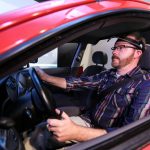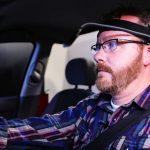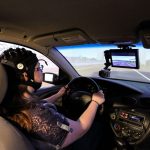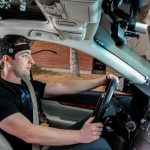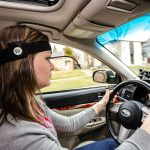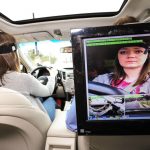
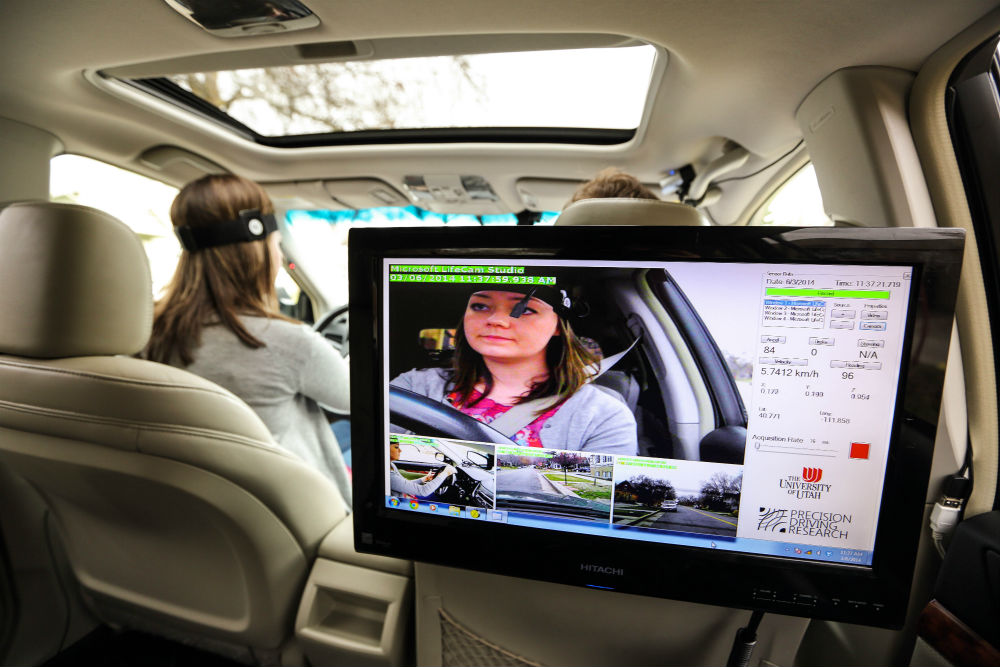
AAA urges manufacturers to focus on accuracy and usability to reduce cognitive distraction.
Using a phone while driving increases risk — unfortunately, many people do just that. Whether it’s for getting turn-by-turn directions, listening to a podcast, or simply making a call; using a phone while driving is a daily activity for most people.
And I don’t blame them.
Using a phone inside your car is not only convenient; but you’re actually encouraged to do so. It’s never been easier to connect mobile devices to vehicles and with new technologies like Apple CarPlay and Android Auto right around the corner, using a phone hands-free as you drive is going to become even easier – but is it safer?
Putting Hands-Free Devices to the Test
Hands-free methods that access your phone while driving are generally considered to be safer than holding the actual phone, but it apparently doesn’t eliminate the risk. As a new study conducted by the AAA Foundation for Traffic Safety and the University of Utah points out: “Technologies used in the car that rely on voice communications may have unintended consequences that adversely affect road safety.”
According to the study, popular new features inside automobiles that rely on voice commands may increase mental distraction in drivers. The results were measured by using a five-category rating system (similar to the one used for hurricanes) and proved the following:
- The accuracy of voice recognition software significantly influences the rate of distraction. Systems with low accuracy and reliability generated a high level (category 3) of distraction.
- Composing text messages and emails using in-vehicle technologies (category 3) was more distracting than using these systems to listen to messages (category 2).
- The quality of the systems’ voice had no impact on distraction levels – listening to a natural or synthetic voice both rated as a category 2 level of distraction.
By using instrumented test vehicles, heart-rate monitors, and devices that measure reaction times, the results disprove everything drivers have been told regarding the safety of hands-free communication.
Several hands-free systems were tested by 162 university students driving a simulator and confirmed what AAA hypothesized: “Hands-free” doesn’t mean “risk-free.”
And the biggest reason why it’s so dangerous is because it’s confusing.
Is “Hands-Free” Really a Safety Feature?
Every major car manufacturer offers a hands-free method for accessing your phone. The problem is it doesn’t always work. Voice commands get garbled, messages are misunderstood, and sometimes the device is just wrong. Because drivers are forced to become preoccupied with figuring out how to solve problems, hands-free communication quickly becomes a dangerous practice.
“We already know that drivers can miss stop signs, pedestrians, and other cars while using voice technologies because their minds are not fully focused on the road ahead. We now understand that current shortcomings in these products, intended as safety features, may unintentionally cause greater levels of cognitive distraction.”
— Bob Darbelnet, Chief Executive Officer of AAA
Adding to the confusion is the fact that every car manufacturer uses different hands-free methods. Because of this, not all systems are equal and some are more distracting than others. And if you think you’re better off just using your phone’s built-in voice commands, think again. The biggest distraction of them all is Apple’s SIRI.
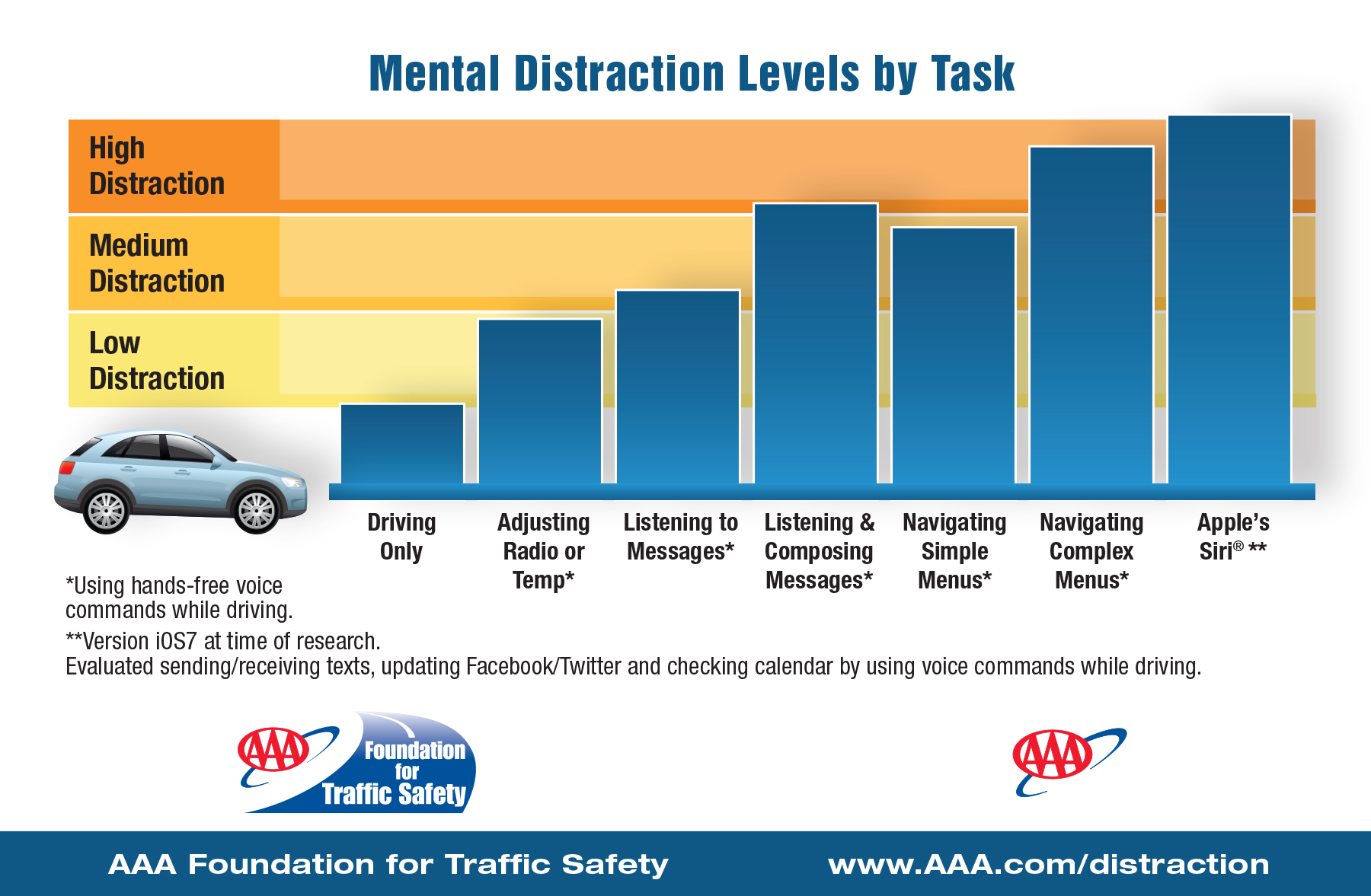
As phones become more embedded into vehicles with new technologies like Apple CarPlay and Android Auto, making hands-free communication easier to use is crucial. Fortunately, the researchers offer a few suggestions to guarantee future hands-free devices are safer.
A Blueprint for Safer Hands-Free Systems
- Reduce Task Duration
- Duration appears to be the most critical element of workload, and includes:
- Dialogue requirements; and
- Accuracy of speech comprehension.
- Systems requiring more task steps but which make fewer errors fare better than those with fewer steps but lower accuracy.
- The music selection task (vs. call placement) is what separated the systems in terms of error rates.
- This table compares the least and most cognitively distracting systems:
|
System |
Workload Rating |
Avg. Time to Place Call |
Avg. Time to Make Music Selection |
|
Toyota Entune |
1.7 |
20 sec. |
22 sec |
|
Chevrolet MyLink |
3.7 |
29 sec. |
43 sec. |
- Ranking the systems according to interaction errors yields precisely the same ordering as when ranking by overall distraction score, and the correlation is statistically significant.
- Based on the limits of working memory capacity, the number of items in any given menu should be limited to four or five.
- Improve System Flexibility
- Generally, drivers give more favorable preference ratings to systems that are easy to use and respond accurately to flexible inputs (e.g. systems that recognize both “Tune to FM 99.5” and “Change to 99.5 FM”).
- Getting accustomed to more rigid systems can feel like learning a new language.
- Mercedes COMAND got the worst participant feedback, requiring numerous steps and highly-specific inputs that appeared to irritate drivers.
- Duration and accuracy, however, are still the most important factors.
- Even though COMAND was subjectively rated the least favorite, it was quite accurate when the proper inputs were provided; this resulted in a mid-range distraction score.
- The Type of Voice Used by the System Is Not a Concern
- Speech technologies have advanced to the point that there is no difference between utilizing synthetic/computerized voices and pre-recorded natural human ones to interact with drivers.
- Limit Driver Access to High-Demand Functions
- Allowing drivers to compose appropriate responses to text/email messages, as opposed to allowing them to listen to messages only, raises the distraction level from a category 2 to a category 3.
- Issuing simple car commands (e.g., adjusting climate control), however, is only about as cognitively distracting as listening to an audiobook (category 1).
The Dilemma
The reality is that a lot of things can distract a driver. Even taking your eyes off the road for a split second to manually change a radio station or adjust the A/C has the potential to cause an accident. But until cars become smarter or driverless cars hit the road, it appears like hands-free technology has to get better to make us safer.
Do you think hands-free technology is a distraction? How can we make phones interact better with our cars? Is it possible to make driving safer? Let us know in the comments below!

